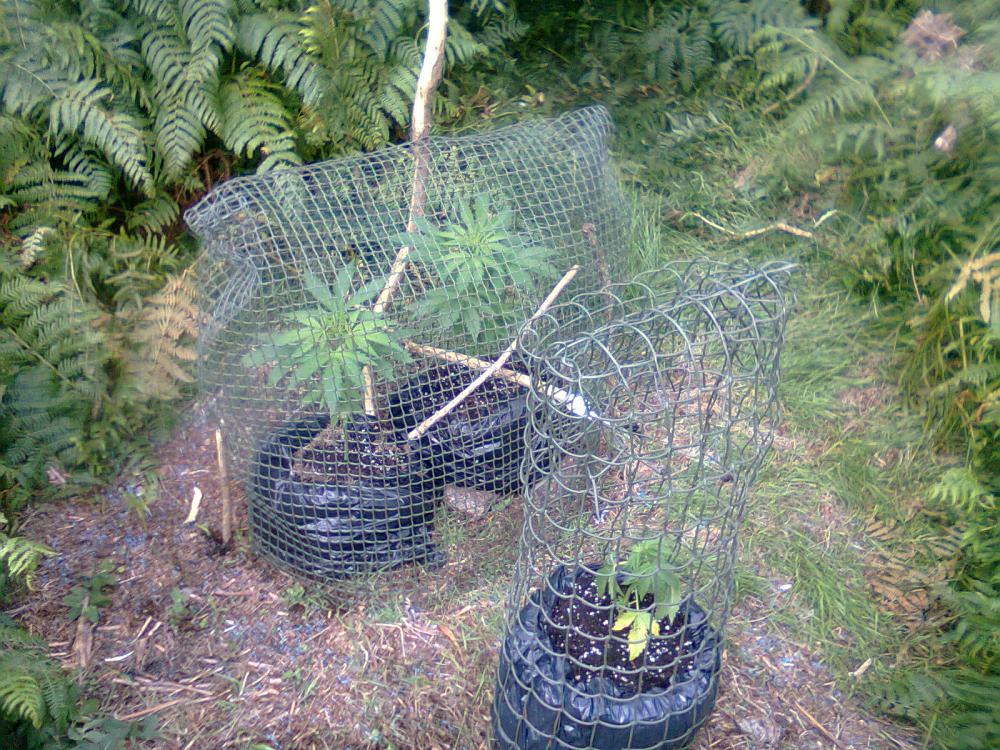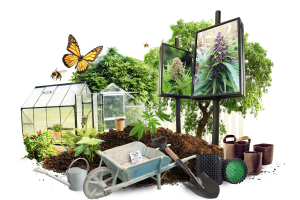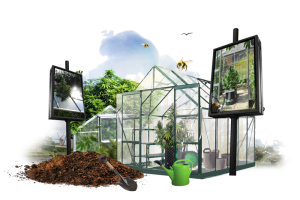7 Essential tips for outdoor growers

We get lots of people asking for top-tips when it comes to successful outdoor growing. You can buy lots of good books on outdoor growing, and there is a lot of useful information on the canna growing forums (such as UK420.com) and we have a handy guide here.
This weeks blog is a summary of what we think are the most important aspects to successfully growing and protecting your outdoor-grown cannabis plants
- Plot preparation. The best growers prepare the plot well. Often the grower will buy quality compost and dig it into the soil, along with fertilizer to ensure that the plants have all the necessary nutrients to grow well. Some Spanish garden centres are now openly selling compost formulated for cannabis growing.

A plot should get lots of sun and no shadows. It should be hidden from view, and ideally protected with bushes, brambles and branches to keep away unwelcome visitors. In some very dry countries the grower may dig water-absorbing crystals into the ground to help protect the plants against a summer drought.Some people prefer to locate their chosen grow area near a natural water source (spring or river) so they can easily get water to their plants in the event of a drought. The summer of 2012 has caused the opposite problem for many growers in northern Europe who have had too much rain and almost no sun.
- Chicken wire. Rabbits, Deer and other wildlife love to eat cannabis plants and they have ruined countless crops. One of the best ways to protect your plants is to use the garden mesh/chicken wire which can be bought at any grow shop. This can be rolled into a tube and put around the plant to protect it. If the deer are a real problem you can also cover the top of the tube with mesh, but remember that the plant will need enough vertical space to grow, so the top-cover will need opening when the plants gets tall enough. Picture courtesy of Dutch Passion friend Grownbitchz from Autoflower.net.

- Slug pellets. Slugs are difficult to get rid of but slug pellets are a good way to protect the plant when it is young and most vulnerable. A ring of copper wire around the base of the plant is recommended by many, as are ground egg shells, diatomaceous earth and ground coffee.

- Fishing line. Many growers routinely surround the perimeter of their site with fishing line. It is a strong but thin plastic wire that can be tied around tree-trunks, branches and sticks and many growers say it is a safe way to deter grazing deer. When the deer sense the fishing line they often back away and graze elsewhere. It doesn’t harm wildlife but it does deter them. A piece of soap on a string, tied to a branch, is claimed to be another good way of deterring deer – the smell is said to keep deer away.
- Protective brambles. Not many outdoor growers (‘guerrilla growers’) accidentally find a great growing spot. Often the best growing locations take a lot of work to find and prepare. And once you have found it, the plot can often be used for many years. The ideal growing location will not be accidentally discovered by others either, often the plot will be surrounded by dense brambles, undergrowth and vegetation. Sometimes this was planted by the grower, sometimes it was there already. Many growers will find a large bramble patch and remove brambles from the central area. That then becomes a safe growing plot which is often safe from rabbits, deer and other people.
- Don’t visit the plot too often. If growing in the countryside or mountains many growers prefer to keep the number of plot visits to a minimum for security reasons. Not only does a grow plot need to be free of repeat visitors; it also should not have any obvious paths to it caused by repeat visits. A realistic minimum is 3 visits. One visit to plant your seedlings, one to check/feed and once to harvest. Keep your plot free of litter, waste or any other unnatural items which will draw attention to it. In winter time, when the natural growth has died it can be easy to spot rolls of chicken wire which will leave your grow spot compromised. A professional grower is also a tidy and responsible one.
- Get some good quality seeds …of a proven variety from a seedbank you trust! Here at Dutch Passion we have had 25 years of experience selectively breeding outdoor varieties that are tough and resilient enough to succeed in tough outdoor conditions. Nowadays the outdoor grower also has the option of AutoFem varieties (feminized autoflowering) which will grow from seed to harvest in 10-11 weeks and these will produce top quality cannabis.
And if you have a useful tip for outdoor growers feel free to leave it in the comments section below.

Basic Guides
Popular varieties
- Auto Blackberry Kush ®
- Auto Blueberry ®
- Auto Brooklyn Sunrise ®
- Auto Cinderella Jack ®
- Auto Colorado Cookies ®
- Auto Daiquiri Lime ®
- Auto Duck ®
- Auto Durban Poison
- Auto Euforia ®
- Auto Frisian Dew
- Auto Glueberry O.G. ®
- Auto Lemon Kix ®
- Auto Mazar ®
- Auto Night Queen ®
- Auto Orange Bud ®
- Auto Think Different
- Auto Ultimate ®
- Auto White Widow ®
- Auto Xtreme ®
- Blue Auto Mazar ®
- Blueberry ®
- Brainstorm
- Bubba Island Kush ®
- C-Vibez ®
- CBD Auto White Widow ®
- CBD Charlotte’s Angel ®
- CBD Compassion ®
- CBD Kush ®
- CBD Skunk Haze ®
- Critical Orange Punch ®
- Desfrán ®
- Durban Poison ®
- Euforia ®
- Freddy’s Best ®
- Frisian Dew ®
- Frisian Duck ®
- Glueberry O.G. ®
- HiFi 4G ®
- Hollands Hope ®
- Jorge’s Diamonds #1 ®
- Kerosene Krash ®
- Master Kush
- Mazar ®
- Meringue ®
- Mokum’s Tulip ®
- Night Queen ®
- Orange Bud ®
- Orange Hill Special ®
- Outlaw Amnesia ®
- Pamir Gold ®
- Passion #1®
- Passion Fruit ®
- Power Plant ®
- Purple #1 ®
- Skunk #11 ®
- StarRyder ®
- Strawberry Cough ®
- Sugar Bomb Punch ®
- The Ultimate ®
- Think Big ®
- Think Fast ®
- White Widow
















